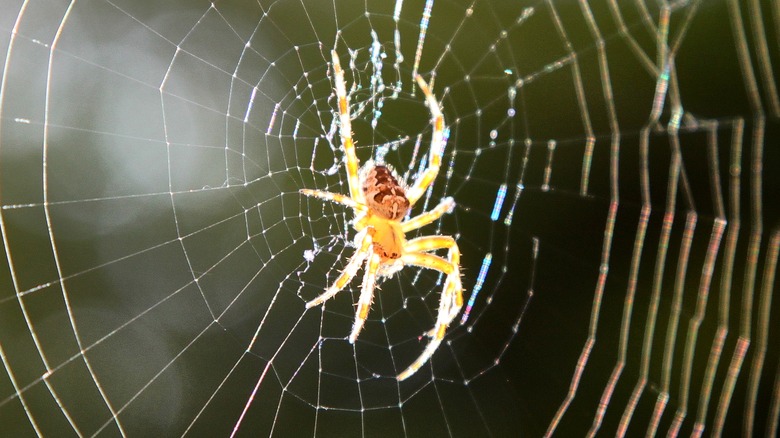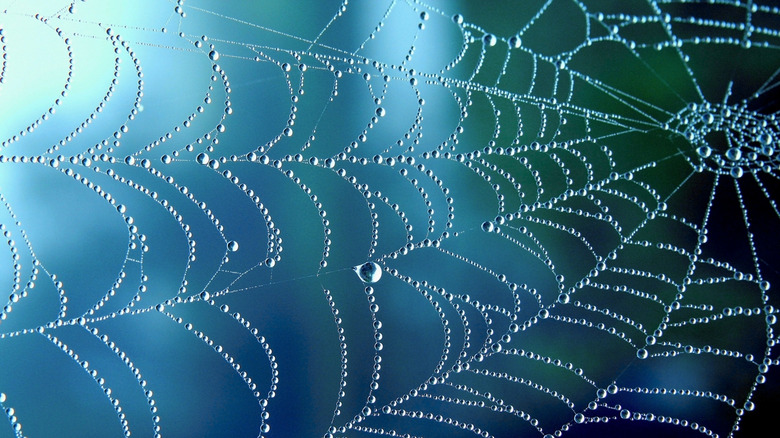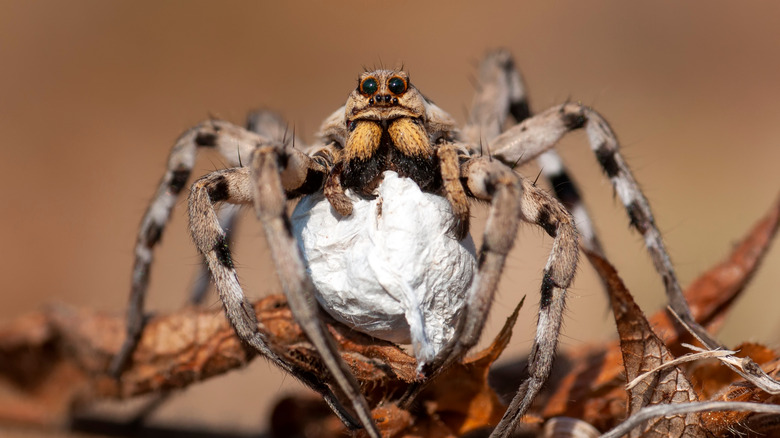Why Don't Spiders Get Stuck In Their Own Web?
We've all been there. One minute we're creeping through the tunnels beneath Mount Doom, and the next we're caught in a sticky web and we can't get ourselves loose. Meanwhile, Shelob's running around without a care, and that hardly seems fair.
Hobbits aren't the only thing to get stuck in spider webs. Everything from house flies to small animals are routinely caught up in sticky strands of spider silk, according to Wonderopolis. Even when we walk through them they cling to our face and clothes and are a pain to get rid of. But spiders themselves never seem to have this problem.
Spiders aren't somehow immune to the adhesion of their own webs, so scientists have long wondered how it is that spiders are able to freely traverse their webs without becoming entangled. It was previously thought that spiders secreted a kind of oil that protected them from being trapped in their webs. But that is only part of the story, as modern science shows us (via Laboratory News).
The science behind not sticking
Spiders employ multiple strategies to keep themselves unstuck from their webs. For starters, not all strands of a spider's web are sticky. In the classic spiral-shaped spider web, for instance, the center of the web and the spokes aren't adhesive. Spiders use these radial webs to get around without fear of getting stuck (via ThoughtCo).
But it's inevitable that spiders have to come into contact with the sticky parts of the web eventually, especially when they're constructing it. In these cases, spiders have three tools that help them get around. First, they're careful. When spiders must come in contact with their sticky threads, they make sure to only use the tips of their legs. These tips are covered in fine, hair-like structures that minimize the surface area in contact with the adhesive. Finally, there really is a coating on the legs that minimizes adhesion, according to the National Library of Medicine.
A silk for every occasion
Since we're on the topic, spider silk is really interesting. It starts out as a liquid protein solution inside the spiders. When it's time to make some silk, the solution is passed through the spinnerets where it's exposed to acid, solidifying it in the process. The gossamer thread that is then spun out is stronger than steel (via Live Science).
And, there's not just one type of silk. The classic spiraled spider web — called the orb-web — is made of two types of silk: a strong, load-bearing strand around the perimeter, and a sticky elastic strand that makes up the spiral rings, as the Smithsonian Magazine explains. Some spiders even make special silks for egg sacs.
Science is only recently beginning to understand the secrets of creating synthetic spider silks. Researchers have genetically engineered bacteria to create the complex protein solution needed for spider silk. Threads are then drawn from this solution which can be used like any other thread (via Materials Today).


